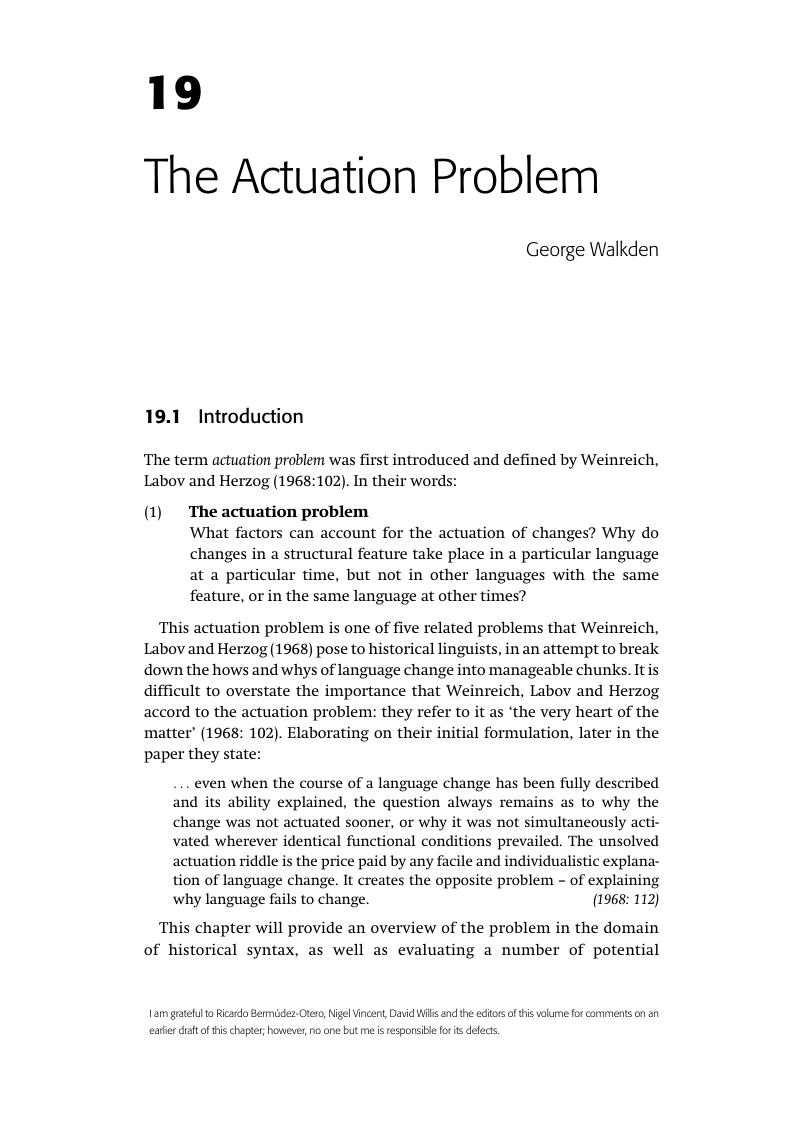Book contents
- The Cambridge Handbook of Historical Syntax
- Cambridge Handbooks in Language and Linguistics
- The Cambridge Handbook of Historical Syntax
- Copyright page
- Contents
- Figures
- Tables
- Contributors
- Abbreviations
- Introduction
- Part I Types and Mechanisms of Syntactic Change
- Part II Methods and Tools
- Part III Principles and Constraints
- Part IV Major Issues and Themes
- 19 The Actuation Problem
- 20 Inertia
- 21 Gradience and Gradualness vs Abruptness
- 22 Cyclicity
- Part V Explanations
- Part VI Models and Approaches
- Index
- References
19 - The Actuation Problem
from Part IV - Major Issues and Themes
Published online by Cambridge University Press: 28 April 2017
- The Cambridge Handbook of Historical Syntax
- Cambridge Handbooks in Language and Linguistics
- The Cambridge Handbook of Historical Syntax
- Copyright page
- Contents
- Figures
- Tables
- Contributors
- Abbreviations
- Introduction
- Part I Types and Mechanisms of Syntactic Change
- Part II Methods and Tools
- Part III Principles and Constraints
- Part IV Major Issues and Themes
- 19 The Actuation Problem
- 20 Inertia
- 21 Gradience and Gradualness vs Abruptness
- 22 Cyclicity
- Part V Explanations
- Part VI Models and Approaches
- Index
- References
Summary

Information
- Type
- Chapter
- Information
- The Cambridge Handbook of Historical Syntax , pp. 403 - 424Publisher: Cambridge University PressPrint publication year: 2017
References
Accessibility standard: Unknown
Why this information is here
This section outlines the accessibility features of this content - including support for screen readers, full keyboard navigation and high-contrast display options. This may not be relevant for you.Accessibility Information
- 18
- Cited by
